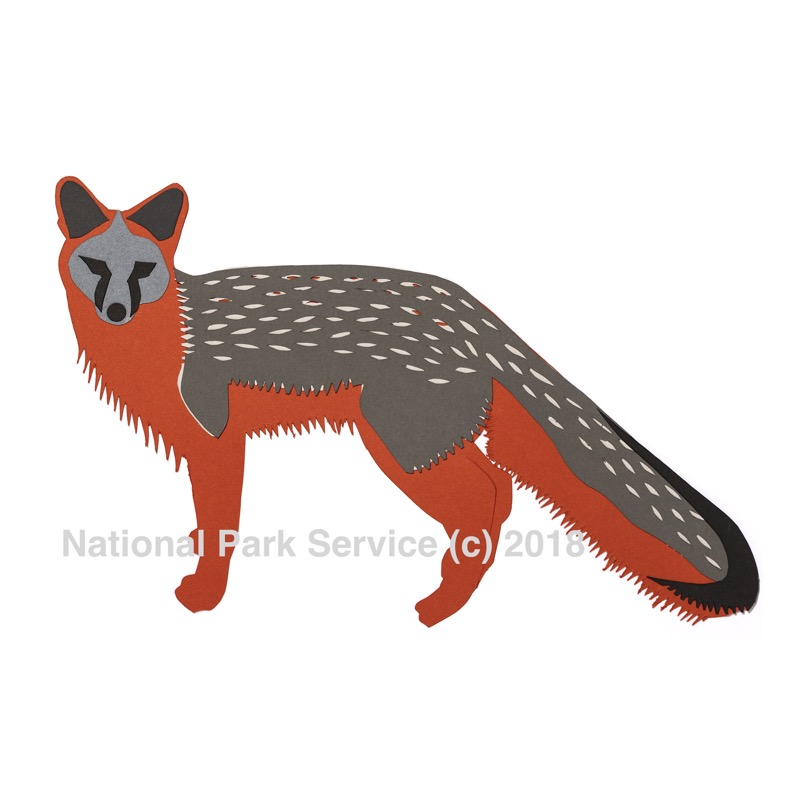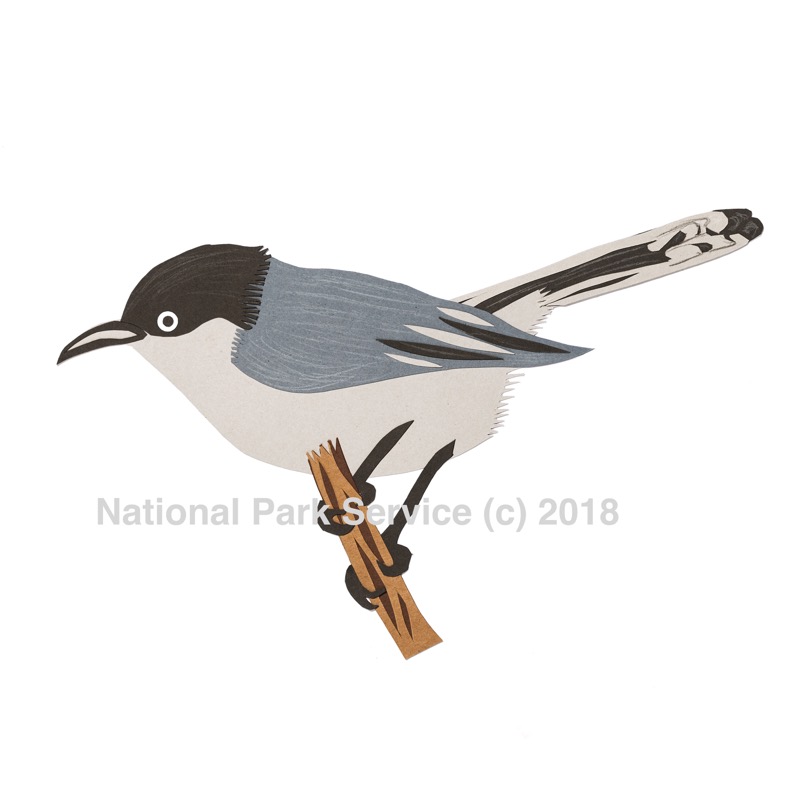The newest exhibit at Cabrillo National Monument, Rock, Paper, Science, explores these themes in 16 intricately designed and cut paper pieces. Each of the beautiful works represents an organism that we do not want ‘cut out’ of the ecosystem. We invite you to come by the Visitors Center today to check them out!
 NPS Photo /Andrew Rosales. Easily distinguished by their bright, daisy-like blooms and fern-like stems, Sea Dahlias are present only in the spring. Sea Dahlias are found exclusively on steep, sandy slopes near the coast. The California Native Plant Society considers these flowers endangered as their habitat is significantly threatened by urban development.
NPS Photo /Andrew Rosales. Easily distinguished by their bright, daisy-like blooms and fern-like stems, Sea Dahlias are present only in the spring. Sea Dahlias are found exclusively on steep, sandy slopes near the coast. The California Native Plant Society considers these flowers endangered as their habitat is significantly threatened by urban development.
NPS Photo/Andrew Rosales. These stealthy, agile predators play a small but important role in the ecosystem. Gray Foxes feed on small rodents and, by doing so, ensure these populations are controlled. Due to the isolation of the park however, fox populations are low and at significant risk of automobile strikes and lowered genetic diversity as a result of potential inbreeding.

NPS Photo/Andrew Rosales. California Gnatcatchers reside in the coastal sage scrub habitat of the south coast. Due to extensive urban development, these small insectivores are federally endangered. At Cabrillo, Gnatcatchers were locally extinct for over 100 years. With effective conservation of their habitat, several Gnatcatchers have recently returned to the park.
About the Artist. Andrew Rosales is a Science Education Specialist at Cabrillo National Monument. He can often be found providing meaningful experiences for students and the public throughout the park. With this installation, Andrew fuses his passions for art and our natural world for the purpose of sharing critical conservation messages with our community.
@CabrilloNPS #RockPaperScience
